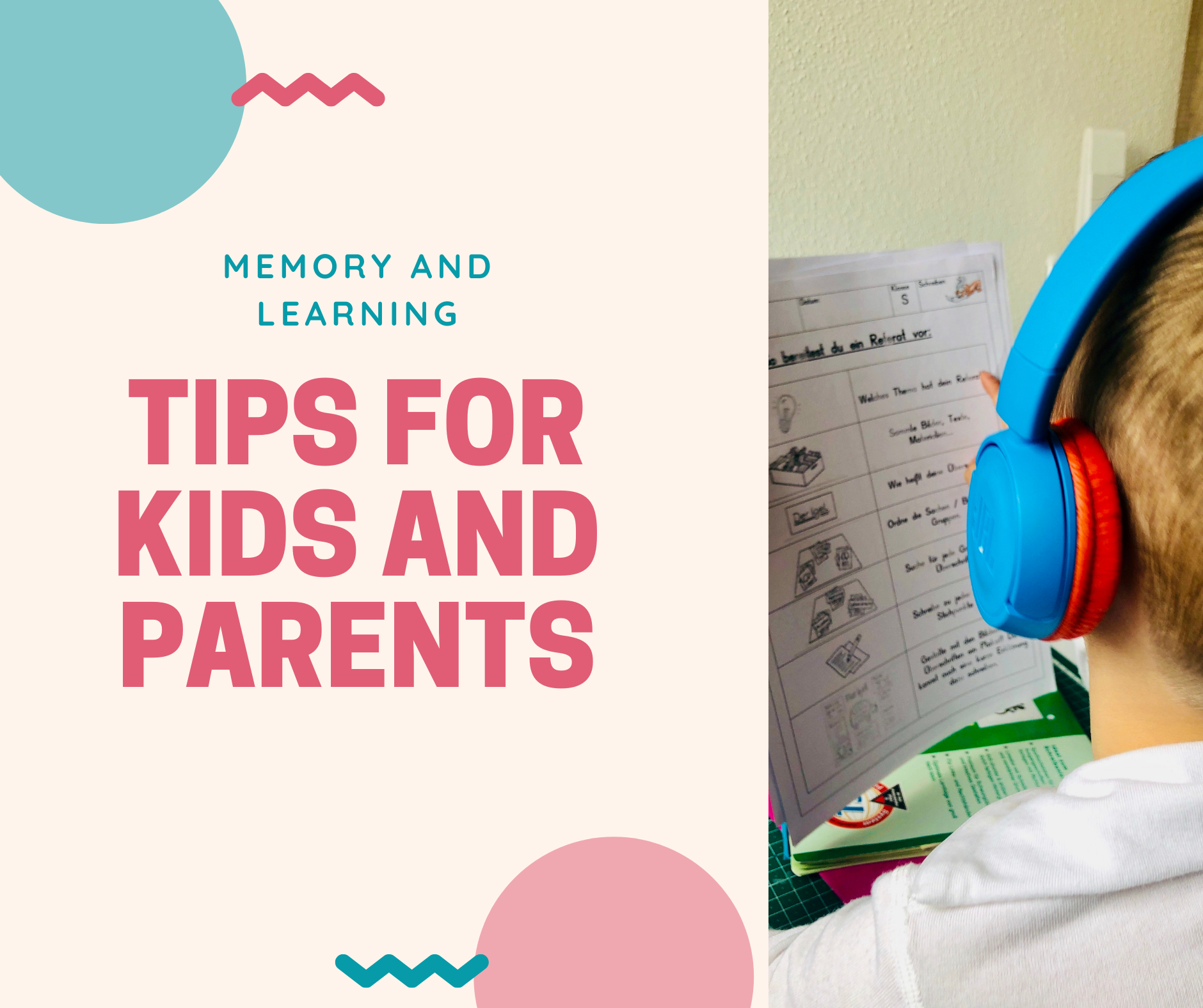Projects for Kids-A Snail Terrarium
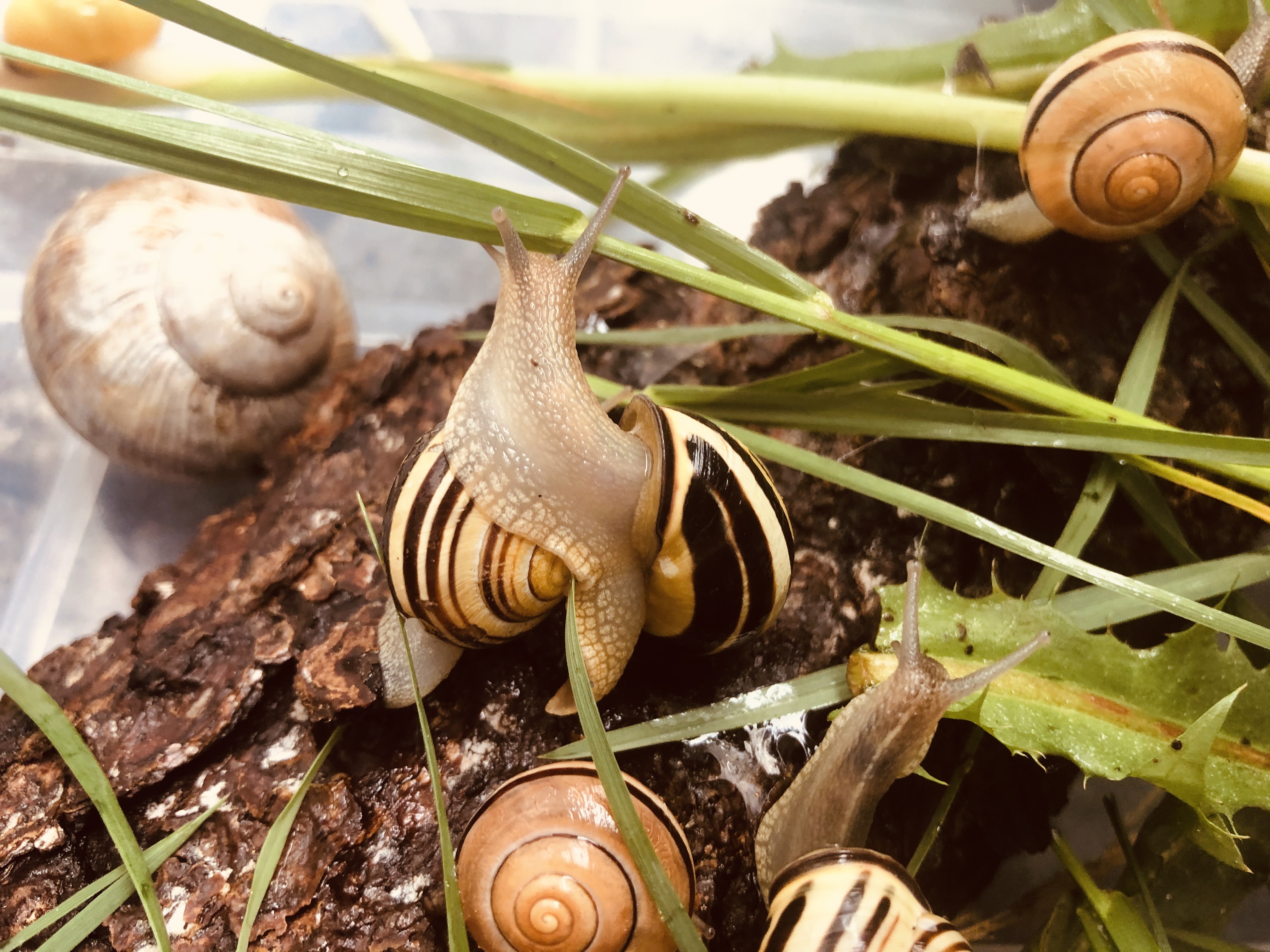
The aim of this mini-project was to make a snail terrarium and learn something about those little cuties. The boys, Einstein E and Power P, had several questions we couldn't answer, and it was a perfect reason to research snails a bit more carefully.
Interesting facts about snails:
- Snails can have lungs or gills depending on the species and their habitat.
- The majority of snails are herbivores, but some larger species and marine-based species can be predatory omnivores or even carnivores.
- Common garden snails have a top speed of 45 m per hour.
- Snails are born with shells, but this “earliest shell,” is colourless and very soft.
So, we made a terrarium, found some snails and put them in their new home, observed them, and let them go. That's why our terrarium is a very simple one. If you plan to make something longer-lasting, consulting an expert would be a better option :)
Materials:
- Box or tank
- Substrate
- Lid (our boys didn't want to put one)
- Vegetables, and, of course
- Snails
Step 1.
Box.
Before we went looking for snails, the boys had to think of a box to put them in. This was when their Playmobil toys had to find another home. At least for that day. They filled the box with some soil they found in our little wannabe garden, put in some branches, grass, sticks, pinecones, and a piece of tree crust.
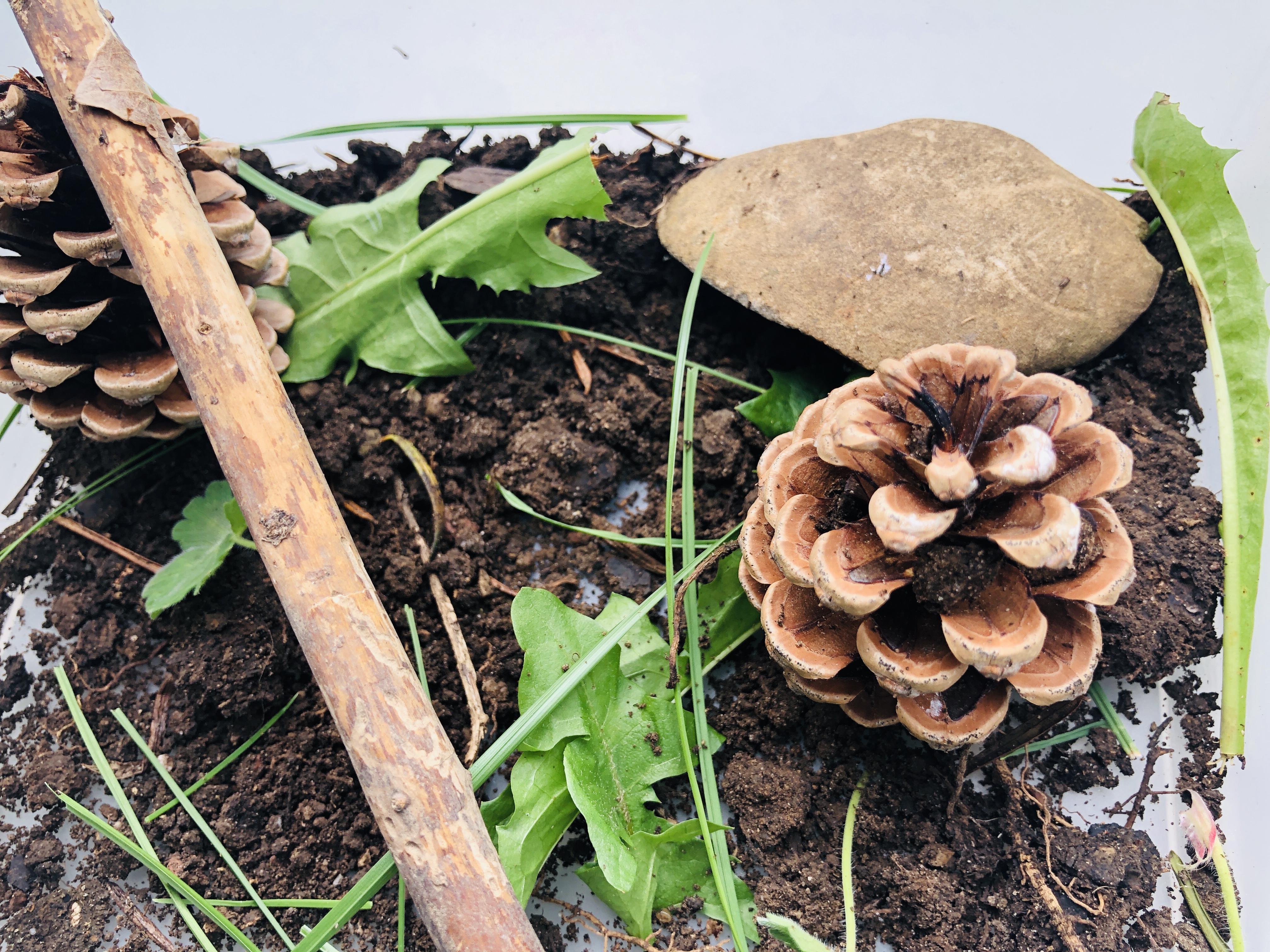
Food.
Then we looked into what snails eat. They cut some lettuce, cucumbers and carrots. Everything was ready for new inhabitants.
Step 3.
Outdoors.
We went into the forest and looked for some snails. It was raining, and the boys found three before we even got to the forest.
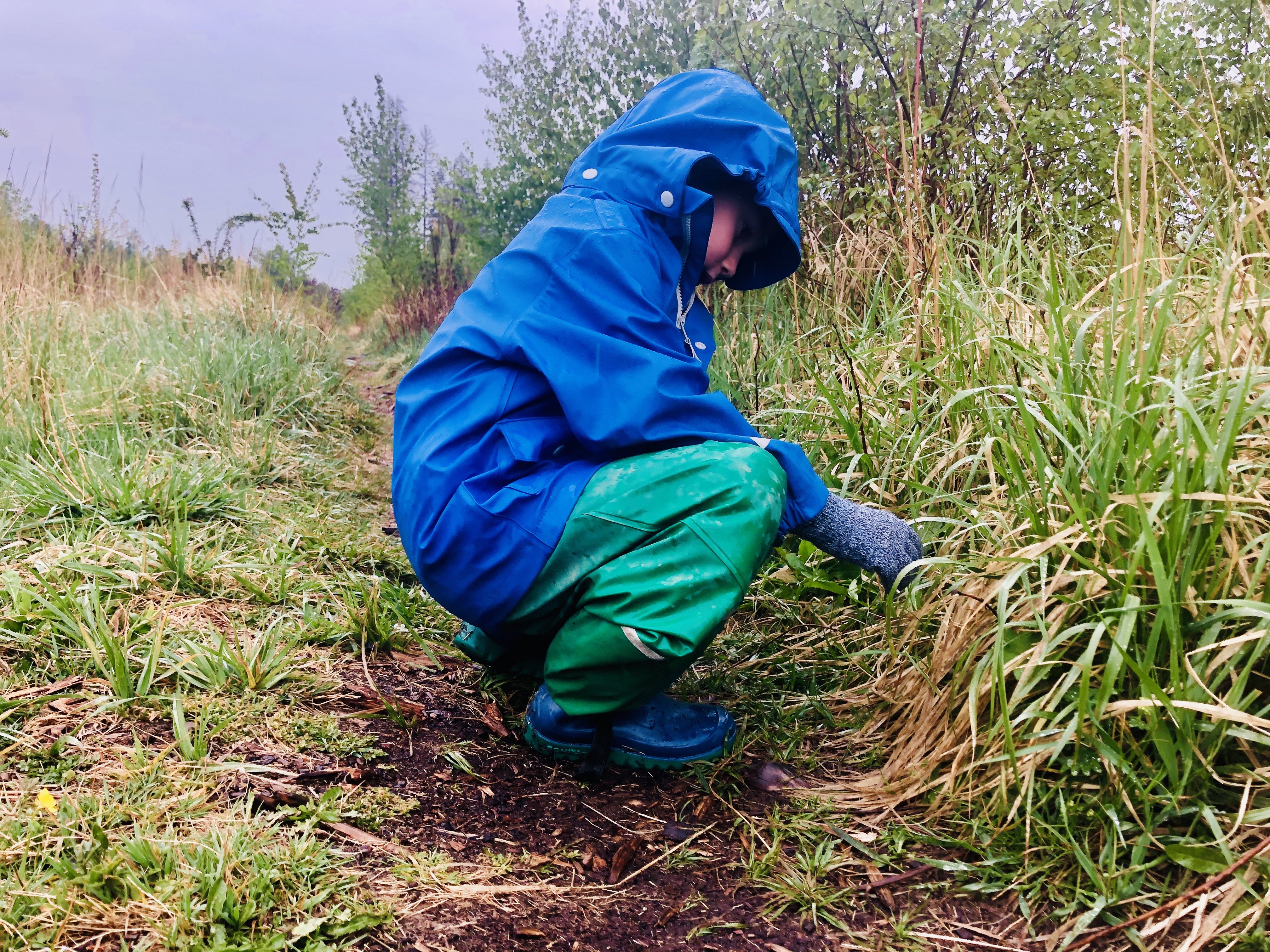
Friends.
“Mummy, this is my new best friend,” said Power P as he was holding a leaf with a tiny slug on it. He carried it carefully, sang and talked to his little buddy until we got home.
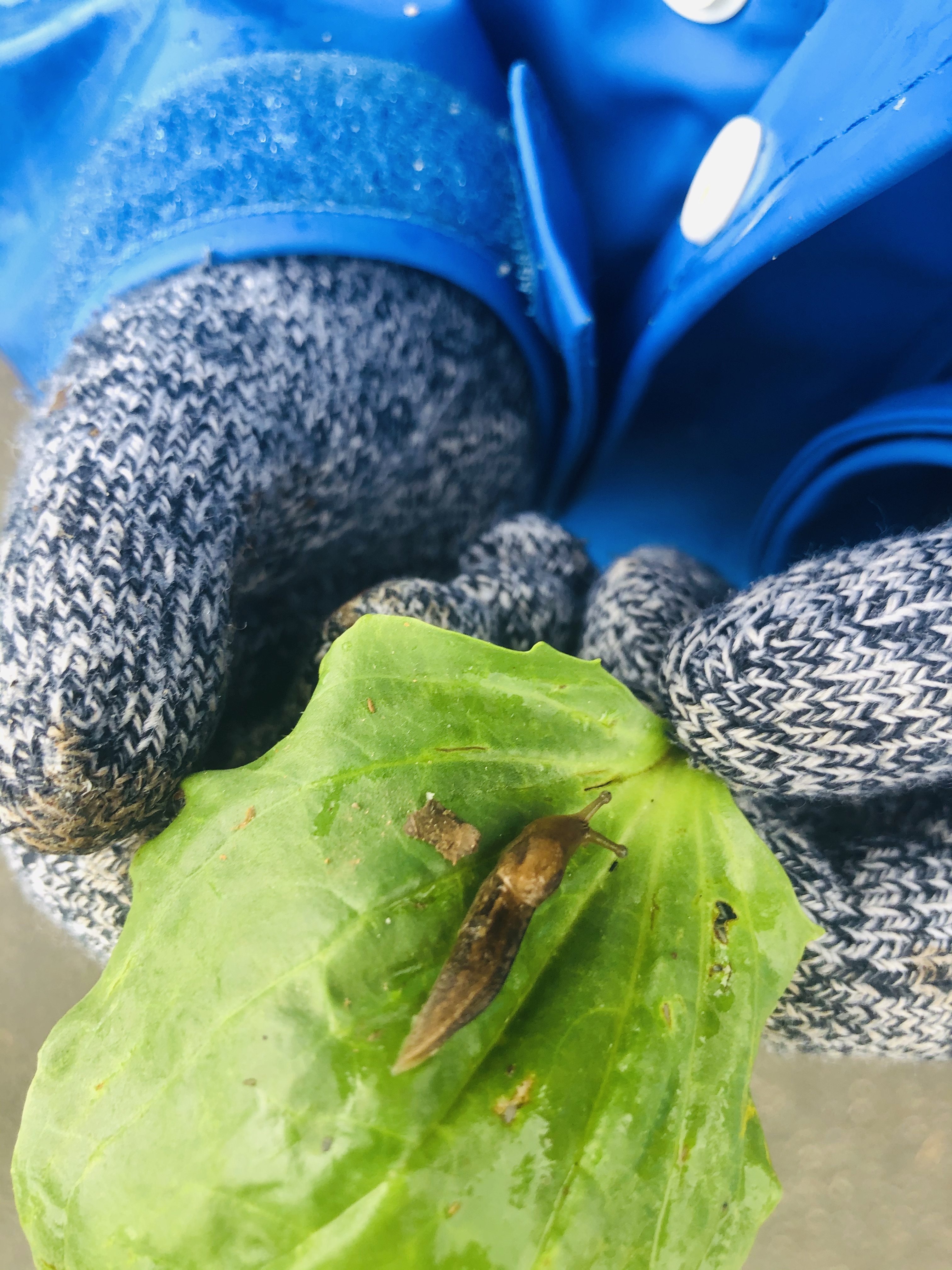
While you are outside on a rainy day, don't forget to jump in or run through some puddles :)

Observing.
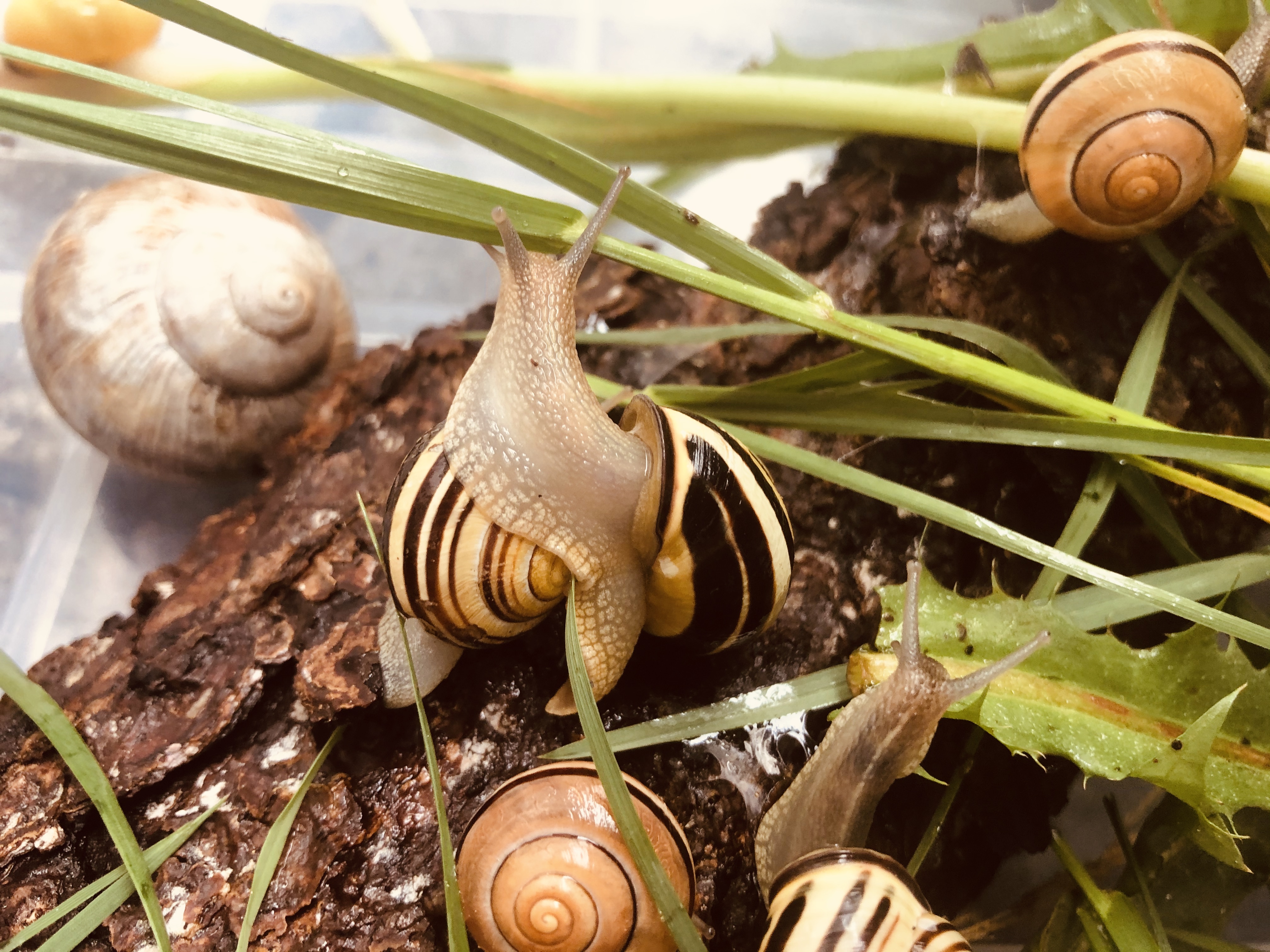
Follow up.
Snail houses and fine-motor skills.
We simply drew a snail house, put some glue on the lines, and Einstein E and Power P put lentil seeds on the lines. With this activity children work on small movements, and the pincer grasp.
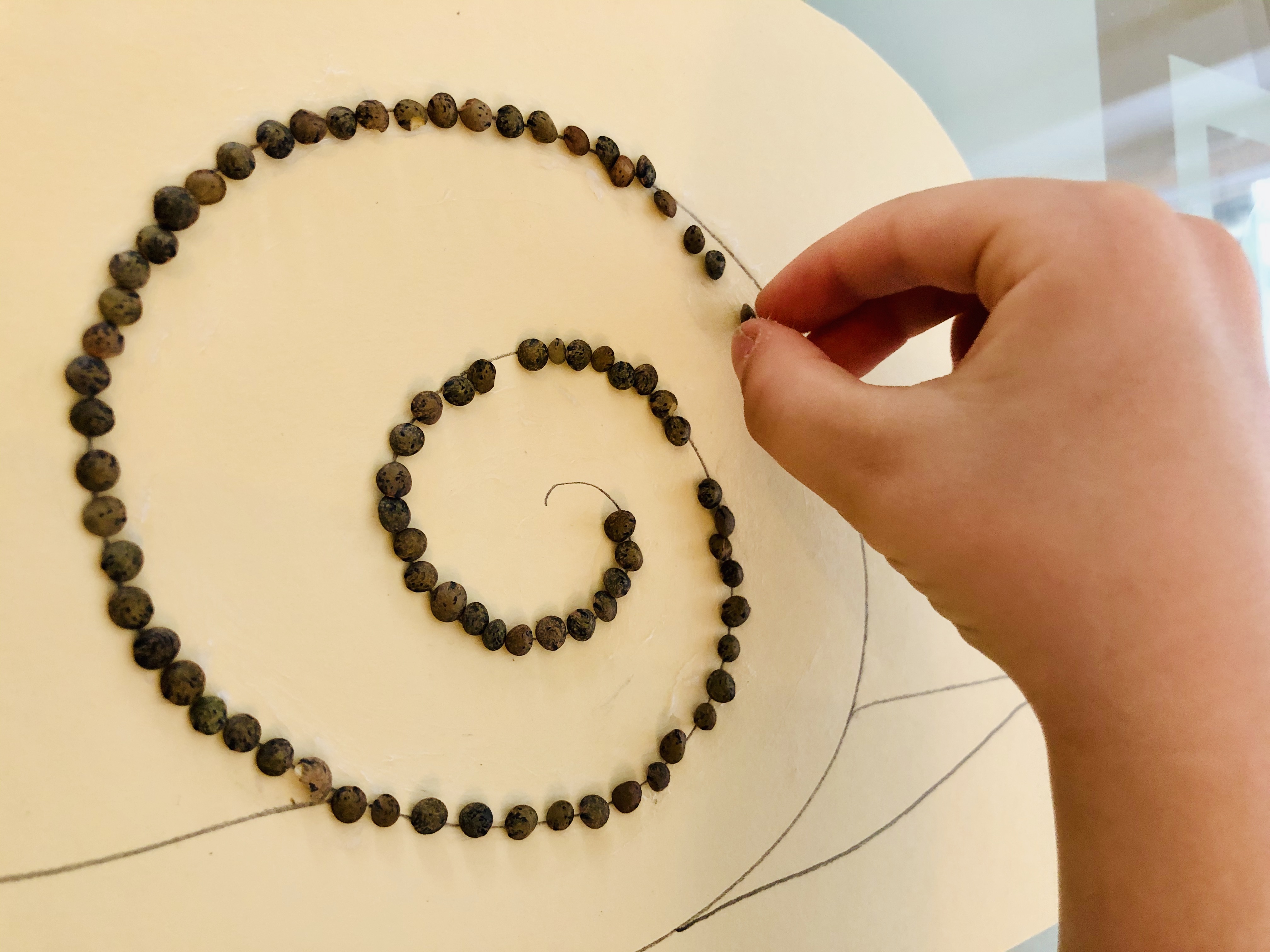
DIY snail toys. For this activity, we used one of the old magazines about trains I brought from Scotland. Why on Earth did I ever think I might read those? Luckily, they served another purpose.

